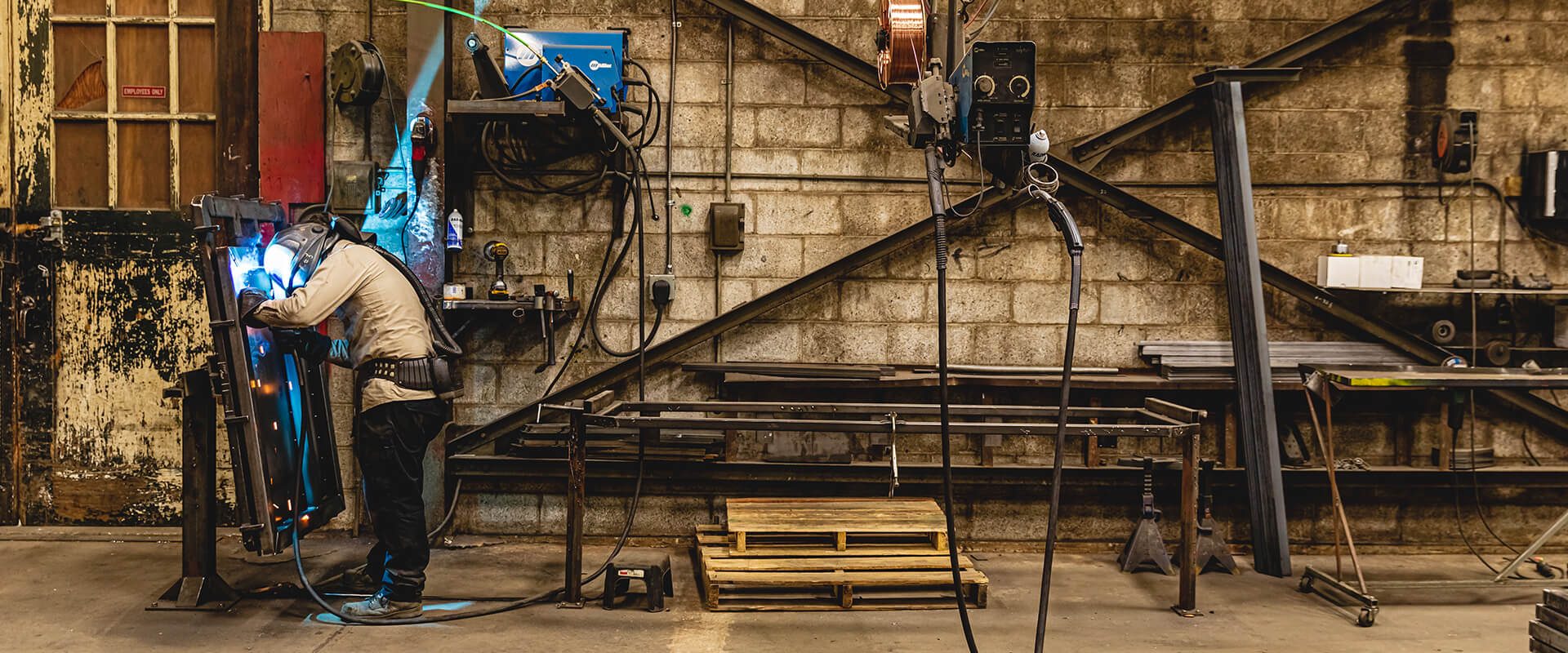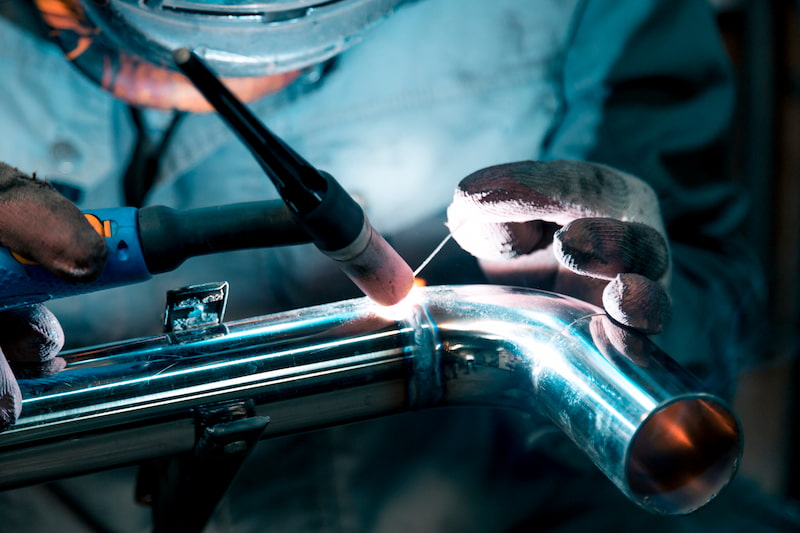Most frequent weld defects solved by Belgrade Welding experts
Wiki Article
Common Welding Repair Service Issues and Exactly How to Address Them Successfully
Welding repair work frequently encounter a variety of concerns that can jeopardize the stability of the end product. Common troubles consist of inadequate infiltration, porosity, and misalignment, amongst others. Each defect presents unique obstacles that call for particular strategies for resolution. Comprehending these concerns is vital for welders intending to boost their abilities and results. This conversation will check out these usual welding repair work concerns and effective approaches to resolve them.Insufficient Infiltration
Insufficient infiltration takes place when the weld steel stops working to completely fuse with the base product, causing weak joints and possible structural failings. This problem often originates from insufficient warm input, wrong electrode angle, or inappropriate welding speed. Welders may run into inadequate infiltration as a result of a mistake of the needed specifications for a details product thickness or kind. Furthermore, contamination on the base material's surface can hinder efficient bonding, exacerbating the problem. To deal with poor infiltration, welders need to guarantee proper setups on their equipment and preserve a clean work surface. Normal examination of welds is suggested to recognize any type of shortages early, permitting for timely improvements and the avoidance of compromised architectural honesty in welded settings up.Porosity
Porosity is an usual issue in welded joints that manifests as small gas bubbles trapped within the weld metal. This flaw can jeopardize the integrity of the weld, leading to reduced strength and possible failing under stress and anxiety. Welding. Porosity generally occurs from contamination, moisture, or improper welding methods, which enable gases to get away right into the molten weld pool. To resolve porosity, welders need to assure proper surface area preparation, maintain a tidy functioning environment, and make use of suitable welding specifications. In addition, picking the best filler product and protecting gas can reduce gas entrapment. Normal evaluation and screening of welds can help identify porosity early, assuring prompt restorative actions are taken, consequently preserving the top quality and reliability of the bonded frameworkMisalignment
Imbalance in welding can arise from different factors, including improper setup and thermal growth. Comprehending the origin is necessary for efficient resolution. Numerous improvement methods are readily available to realign elements and assure structural integrity.Sources of Misalignment
Welding misalignment often originates from a variety of underlying issues that can compromise structural integrity. One key cause is inappropriate fit-up of components before welding, which can lead to spaces and uneven surface areas. Variations in thermal development throughout the welding process can also cause distortion, specifically if the products being joined have various coefficients of development. In addition, insufficient securing and fixturing may fall short to hold elements safely in position, causing motion during welding. Inadequately maintained equipment, consisting of welding makers and tools, might introduce incongruities in the weld bead, additional contributing to misalignment. Finally, driver error, stemming from insufficient training or experience, can also play a substantial duty in creating misaligned welds.Adjustment Methods Available
Attending to misalignment effectively calls for a mix of corrective techniques customized to the specific concerns at hand. One common technique is using fixtures or jigs to hold elements in the correct setting throughout welding, guaranteeing consistent positioning. Additionally, pre-heating the materials can help minimize distortion and improve fit-up. For significant imbalance, mechanical realignment strategies, such as using hydraulic jacks or clamps, can be utilized to fix the placement prior to welding. Post-weld warm treatment might also be needed to ease stress and anxieties triggered by misalignment. Cautious evaluation and modification during the configuration stage can protect against misalignment problems from coming to be significant issues, promoting a smoother welding procedure and boosting overall structural stability.Distortion
Distortion is an usual challenge in welding that can arise from numerous elements, including unequal heating and cooling. Recognizing the root causes of distortion is important for implementing reliable prevention strategies. Addressing this problem not just enhances structural stability yet likewise enhances the overall high quality of the weld.Root causes of Distortion
When subjected to the intense warm of welding, products often go through adjustments that can cause distortion. This sensation mostly occurs from thermal growth and contraction during the welding procedure. As the weld area warms up, the product broadens; upon cooling, it acquires, which can develop interior stress and anxieties. Furthermore, uneven heating across a work surface can aggravate these stresses, leading to bending or flexing. The sort of product likewise plays a significant role; steels with varying thermal conductivity and coefficients of development might react in a different way, bring about unpredictable distortions. Furthermore, poor joint layout and inadequate fixturing can add to imbalance during welding, enhancing the likelihood of distortion. Recognizing these reasons is crucial for effective other welding repair service and avoidance approaches.Avoidance Techniques
Reliable avoidance techniques for distortion throughout welding concentrate on managing warmth input and making certain correct joint design. Preserving a regular heat input aids to reduce thermal development and contraction, which can lead to distortion. Using strategies such as pre-heating the work surface can likewise minimize the temperature slope, advertising consistent home heating. Additionally, selecting proper joint layouts, such as T-joints or lap joints, can improve stability and reduce stress and anxiety concentrations. Carrying out proper fixturing to secure the work surfaces in location even more aids in maintaining positioning throughout the welding procedure. Finally, staggered welding sequences can distribute warmth a lot more uniformly, protecting against localized distortion. By using these strategies, welders can greatly reduce the chance of distortion and boost the total quality of their welds.Breaking
Fracturing is a common issue experienced in welding repair services, typically resulting from numerous factors such as improper air conditioning rates, material choice, or inadequate joint preparation. The event of cracks can substantially compromise the honesty of the weld, leading to possible failings throughout procedure. To address this problem, welders should first evaluate the source, ensuring that products are suitable and suitably chosen for the particular application. Furthermore, managing the air conditioning rate during the welding process is essential; rapid air conditioning can generate stress and bring about cracking. Correct joint layout and prep work likewise add to decreasing the risk. Carrying out these techniques can enhance weld quality and longevity, ultimately decreasing the possibility of splitting in finished weldments.
Incomplete Combination
A substantial concern in welding fixings is insufficient fusion, which takes place when the weld metal does not appropriately bond with the base product or previous weld passes - Montana Mobile Welding and Repair. This problem can bring about weak points in the joint, possibly endangering the integrity of the bonded structure. Variables contributing to insufficient fusion include inadequate warm input, inappropriate welding technique, and contamination of the surfaces being signed up with. To resolve this problem effectively, welders should ensure appropriate pre-weld cleaning and surface area preparation, as well as readjust their welding criteria to achieve ample infiltration and browse around here fusion. Routine inspection during the welding procedure can additionally assist identify incomplete combination early, enabling prompt corrective actions to enhance the total quality of the weldOverheating
While welding repair work can boost architectural integrity, overheating offers a significant obstacle that can cause product degradation. Excessive warm throughout welding can alter the mechanical homes of metals, resulting in decreased strength, boosted brittleness, and warping. This sensation is specifically critical in high-stress applications where structural dependability is vital. Identifying overheating can involve visual examinations for discoloration or distortion, in addition to keeping track of temperature level during the welding process. To minimize the dangers connected with getting too hot, welders need to employ appropriate strategies, such as controlling warmth input, adjusting traveling rate, and using suitable filler materials. Furthermore, implementing pre- and post-weld heat treatments can assist recover material properties and improve the total quality of the repair work, ensuring long-term performance and safety.Frequently Asked Inquiries
What Are the Typical Indications of a Welding Problem?

Just How Can I Evaluate My Welds for Top quality?
To examine welds for high quality, one can utilize aesthetic examinations, ultrasonic testing, and radiographic techniques. Each technique assures architectural honesty, determines problems, and validates adherence to defined standards, inevitably improving the integrity of the welded joints.What Safety Preventative Measures Should I Take While Welding?
When welding, one should prioritize safety by using appropriate individual moved here protective devices, ensuring proper air flow, safeguarding combustible materials away, preserving a tidy work space, and understanding environments to protect against accidents and injuries.Can I Fix a Weld Without Redesigning the Entire Joint?
Fixing a weld without renovating the entire joint is feasible, relying on the damages (Fabrication). Techniques such as grinding, including filler product, or making use of a welding process can efficiently resolve particular defects while protecting the surrounding frameworkWhat Tools Are Vital for Reliable Welding Repairs?
Vital tools for effective welding repair services consist of a welding equipment, cable brush, mill, safety gear, clamps, and filler materials. Each tool plays an important role in guaranteeing top quality and safety throughout the repair procedure. Porosity typically develops from contamination, wetness, or incorrect welding strategies, which permit gases to escape into the molten weld swimming pool. Poorly conserved equipment, consisting of welding makers and tools, might introduce inconsistencies in the weld bead, more contributing to imbalance. When subjected to the extreme heat of welding, products usually undergo modifications that can lead to distortion. Breaking is a typical issue experienced in welding repair work, often resulting from different aspects such as incorrect air conditioning prices, material choice, or poor joint prep work. A significant issue in welding repair services is incomplete fusion, which takes place when the weld steel does not sufficiently bond with the base product or previous weld passes.Report this wiki page